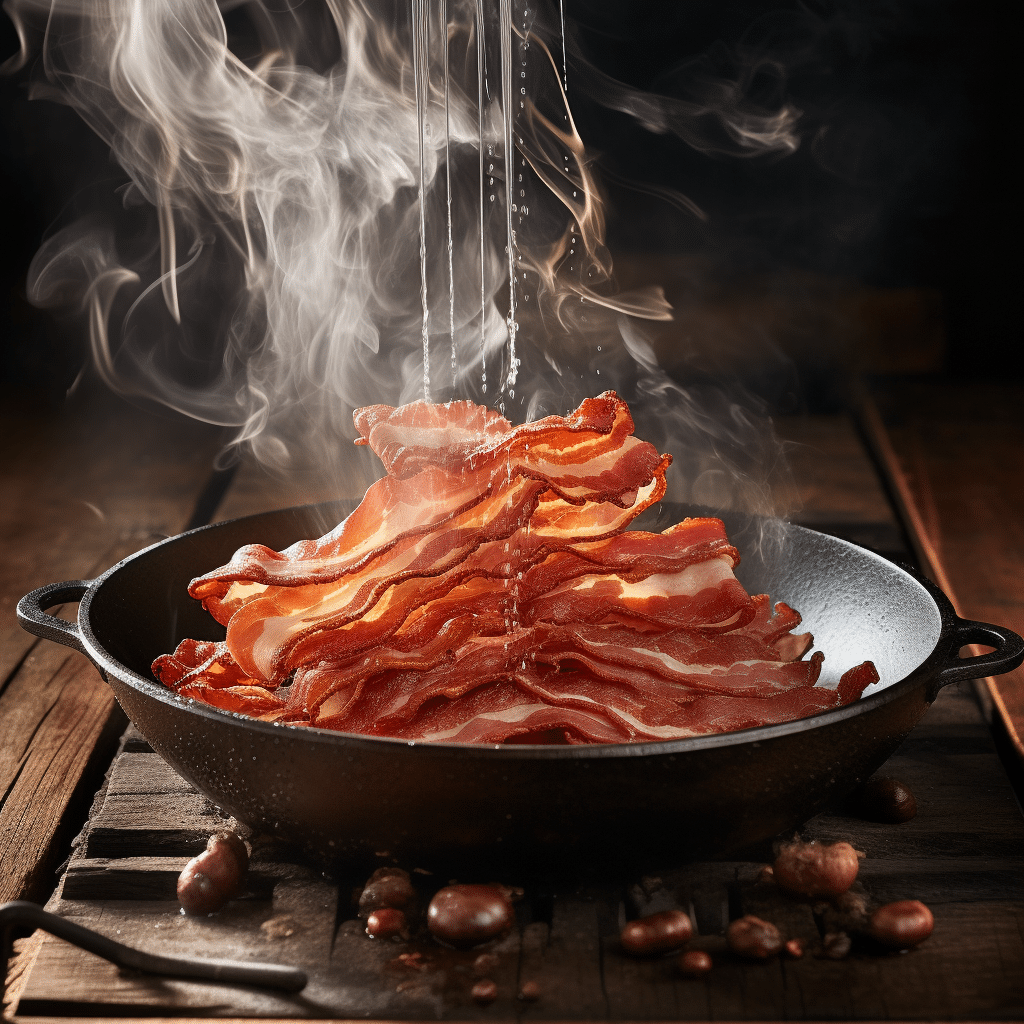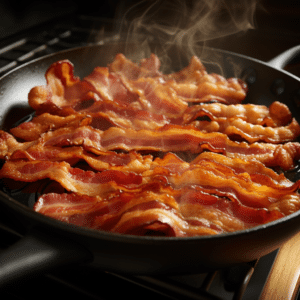
Mastering Bacon Cooking: Tips to Prevent Curls
Prevent Bacon Curls When Cooking: Prevent Bacon Curls When Cooking Bacon is probably the most popular food in the world that you can’t go wrong with. It is a hardy product that can be used for various purposes. From breakfast to dinner, it’s one of those foods that will never go out of style.
Whether it’s eaten on its own, wrapped around a burger, or smothered in eggs, bacon is sure to be a hit with your family and friends. While perfectly cooked bacon can be tricky to get right every time due to curls, it doesn’t have to be.
There are a variety of ways you can use to avoid curls and get the best out of your meat. Keep reading to learn more.

Why Bacon Curls When Cooking
Bacon is a prevalent food. It’s the perfect treat for breakfast, lunch, or dinner. Whether you like your bacon crispy or chewy, you should know a few things about its cooking.
Typically bacon contains fats and meat. The fat will cook much faster than the proteins inside the meat, forcing it to shrink in size, which will induce curling. Additionally, bacon will curl when cooked at high temperatures or exposed to high heat for long periods (like when you fry it).
For instance, when you fry or grill bacon in a skillet over medium-low heat, all of its juices will boil up and mix with oil, creating steam. The steam will then create bubbles in your pan and leave behind a crispy outside coating (the skin) but with an uncooked center (the meat).
And this is why you need to cook bacon until it has reached an internal temperature of 160ºF before removing it from heat and cooling entirely before eating so that all those delicious juices can be released into that crispy exterior without overcooking them too much.
Similarly, water can also be responsible for curling bacon. In essence, the water in the meat surrounding the fat gives it that distinct “crisp” texture. So when you start cooking bacon, the fat will render and render more until all the moisture has been cooked out of the meat.
As soon as all the moisture is gone, your chunk will burn at a higher temperature inducing curling. Simply because there’s nothing left to hold it together except for some protein fibers in the meat, which are heated up and contracted by extreme heat (500 degrees).
How To Prevent Bacon From Curling
It’s no secret that bacon can get a little crispy and even hard when you fry or grill it. That’s why there are so many ways to prevent your bacon from curling.
Preheat the Oven
If you’re planning to cook the bacon in your oven, ensure your rack is no higher than halfway up the oven so it doesn’t burn before the bottom of the pan heats up properly. This will also help prevent curling and shrinkage during cooking and keep any grease from burning onto other pans or dishes in your oven.
Use Parchment Paper Or Aluminum Foil
If using nonstick cooking spray on paper towels and aluminum foil won’t do the trick, try using parchment paper instead! The paper will catch any drippings before they start falling into your pan, which means less mess and less curling while cooking!
Additionally, try flipping your bacon over in the pan as soon as it’s done cooking. Many people like this because it gives them more control over how their bacon turns out and keeps it moist.
If possible, use an oven with a rack that fits inside the pan of your choice. This will help keep your bacon from curling up on itself when it cooks. However, if you don’t have an oven rack for your pan or don’t want to mess with flipping things over in the pan, try wrapping your bacon tightly in foil before inserting it into the oven.
This will help protect against excess moisture seeping through cracks or tears in the foil and causing curling problems when cooking.
Why Does My Bacon Shrivel?
The most common reason for shriveling bacon is the reduction in moisture while cooking. When temperatures go beyond the recommended level, or you extend cooking time, expect moisture evaporation in your meat, hence shrinking.
This is why bacon that has been frozen or previously cooked can shrink significantly in size when cooked again. It’s also why you may find small pieces of bacon in your pan after you’ve finished cooking your bacon — they shrunk significantly during the cooking process and were difficult to remove before they dried out completely.
Bacon cooked at a high enough temperature will also shrivel. If left in an uncooked state for too long before storing or eating. This is why many people keep their bacon-wrapped tightly in plastic wrap until ready to eat. They don’t want to lose any more moisture than necessary by letting it sit out for too long.
How Do You Make Bacon Not Shrivel?
Many people who love bacon will tell you that oven cooking is the only way to make it crispy. However, there are some other ways you can use and ensure your bacon does not shrivel.
And one of the most common methods for preventing your. Bacon from getting soggy is running it under cold water after cooking. This will help prevent the fat from separating from the meat and making it soggy. You can also put the cooked bacon on paper towels and insert them. Into a ziplock bag to maintain crispness while cooling off.
Ultimately, you can use an oven to prevent shriveling. If you don’t have an oven or want to avoid using an oven at all, then you can use a grill instead. Just heat your grill until it’s hot enough so that when you place your bacon. On there, it’ll be cooked through but not burnt to a crisp (about 365F).

Bottom Line
Prevent Bacon Curls When Cooking As we’ve shown you in this guide, it’s surprisingly easy to keep your bacon from curling from the start. Soak your bacon in water for an hour before cooking, then use a wire rack when cooking it. You’ll avoid curling entirely from prepping to frying and enjoy delicious, irresistible bacon.